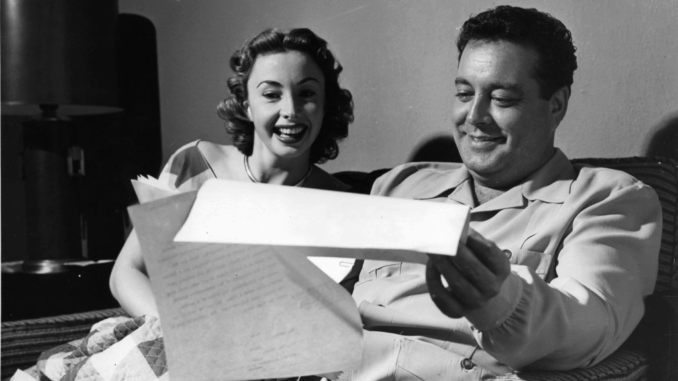
When people think of The Honeymooners, one name immediately comes to mind: Jackie Gleason. His booming voice, exaggerated gestures, and unforgettable portrayal of Ralph Kramden have secured his place in television history. Yet behind Gleason’s brilliance stood a small but formidable team of writers — the hidden architects who laid the foundation for one of America’s most enduring sitcoms.
While Gleason was known as “The Great One,” he often preferred spontaneity to rigid structure. He thrived on improvisation, sometimes tossing out entire scripts hours before cameras rolled. But spontaneity needed a starting point, and that came from the words, situations, and finely tuned humor crafted by his writers. Without them, Ralph, Alice, Norton, and Trixie might never have found their rhythm.
At the heart of the writing staff were Marvin Marx and Walter Stone, who became indispensable during the creation of the “Classic 39” episodes in 1955–56. Their genius was not just in crafting jokes but in grounding them in reality. They tapped into the lives of ordinary working-class families, embedding relatable frustrations into the Kramdens’ tiny Brooklyn apartment. Whether it was the anxiety of paying rent, the temptation of a get-rich-quick scheme, or the chaos of a broken refrigerator, Marx and Stone turned everyday struggles into comedy gold.

Their scripts gave structure to Gleason’s bombast, framed Art Carney’s eccentric physical comedy, and set up Audrey Meadows’ razor-sharp comebacks. Joyce Randolph, who played Trixie, later remarked that the dialogue felt so natural it often mirrored real conversations she heard growing up. That authenticity was no accident; Marx and Stone studied Gleason’s own Brooklyn roots, his swagger, and his stubborn streak, weaving them directly into Ralph Kramden’s character.
But life as a Honeymooners writer was far from easy. Gleason was demanding, mercurial, and famously unpredictable. Writers frequently found their polished scripts discarded minutes before rehearsal. Gleason might insist on rewriting an entire scene on the spot, forcing the team to scramble for alternatives. Some writers found the process maddening, while others thrived under the high-pressure environment. “It was like comedy boot camp,” one later admitted.
Still, Gleason valued loyalty and knew the importance of his behind-the-scenes collaborators. He paid his writers generously, defended them from network meddling, and publicly credited them — a gesture not all television stars of the era extended to their staff. Though he carried the spotlight, Gleason never pretended he did it all alone. He understood that his genius flourished because others helped shape the stage beneath him.
Interestingly, the writers themselves admitted that much of their inspiration came directly from Gleason’s personality. Ralph’s mix of bravado and insecurity reflected Gleason’s own complexities. His quick temper, his longing for something bigger, and his affection for those closest to him were all traits the writers saw in the man behind the role. In a sense, Gleason wasn’t just performing their words — he was living them.
Despite their critical role, Marx, Stone, and the rest of the writing team have remained largely in the shadows of television history. Unlike the actors, whose faces became immortal, the writers’ names rarely surface outside of credits. Yet without them, The Honeymooners might not have become the cultural landmark it is today. They were the ones who transformed Gleason’s vision into stories that resonated with millions of Americans, turning the Kramdens’ modest apartment into a mirror of national life.
Today, more than six decades later, The Honeymooners still holds up. Its dialogue feels sharp, its humor timeless, and its heart surprisingly modern. That endurance is the true testament to the writers who crafted words strong enough to outlast their own anonymity. They were, quite literally, the architects of laughter.
So while Gleason remains “The Great One,” it’s worth remembering that even the greatest stars shine brighter when supported by the unsung brilliance of those working quietly behind the curtain.
